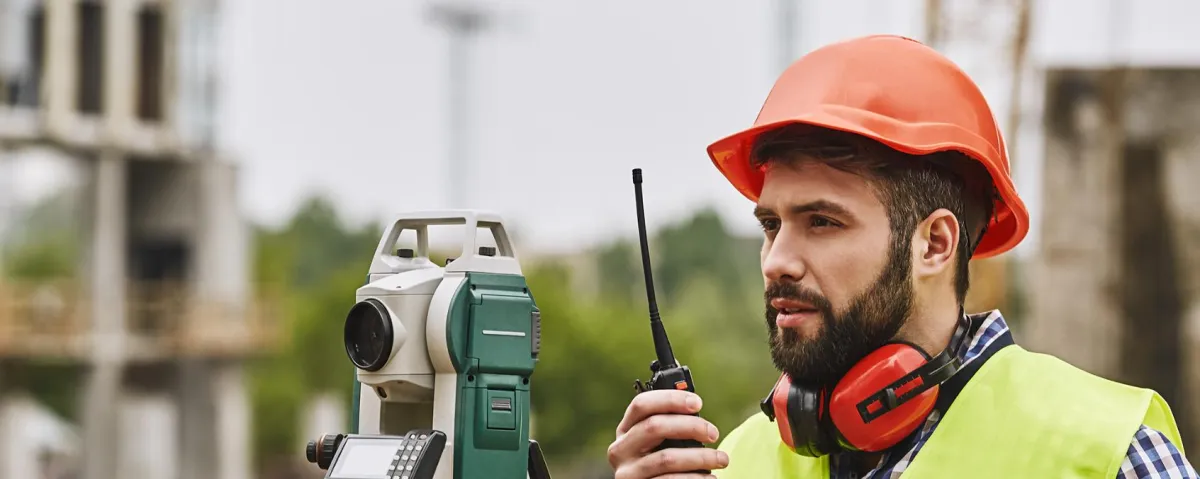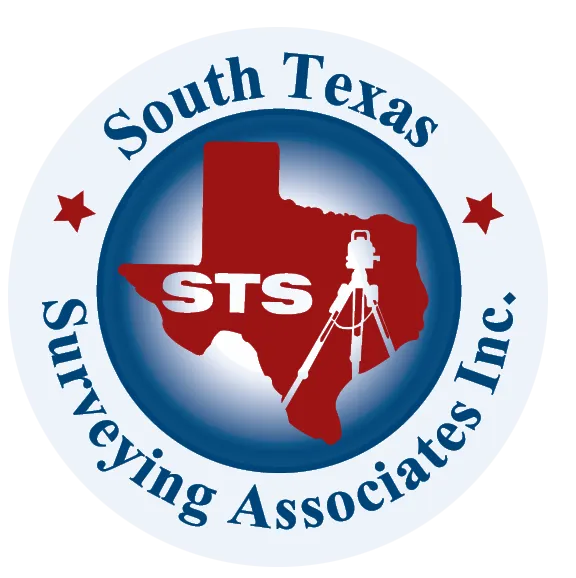Surveying Texas Since 1980 Family Owned, Customer Devoted | Firm #10045400 | 281-556-6918
See Our Latest Blogs

Elevation Surveys: Key to Building in San Antonio's Flood Zones
"Texas, often referred to as the Lone Star State, is a thriving hub for economic growth and innovation, making it an attractive destination for commercial real estate investment." - Chris Evans
Elevation Surveys: Key to Building in San Antonio's Flood Zones
San Antonio’s vibrant commercial real estate market continues to grow, but with that growth comes the challenge of building in areas prone to flooding. As the city has a history of severe flood events, it is crucial for developers and property owners to understand the risks associated with flood zones. One of the most critical tools for mitigating these risks is the elevation survey. In this article, we’ll explore how elevation surveys are essential for building in San Antonio’s flood zones and why they are a key part of developing commercial properties in the region.
Introduction to Elevation Surveys in San Antonio
An elevation survey is a detailed assessment of a property’s height relative to a specific vertical datum, often referred to as Base Flood Elevation (BFE). This survey helps determine a property’s vulnerability to flooding and is essential for understanding whether a commercial site is located in a flood zone. For properties in San Antonio, where heavy rainfall and river flooding are ongoing concerns, elevation surveys are a vital part of the building and planning process, especially for commercial developments.
Why Flood Zones are a Major Concern in San Antonio
San Antonio has a history of dealing with frequent flooding due to its geography, climate, and proximity to major water bodies such as the San Antonio River. As the city expands, understanding and managing the risks associated with flood zones has become more important than ever.
The Impact of Flooding on Commercial Properties
Flooding can cause extensive damage to commercial properties, leading to costly repairs, operational downtime, and even long-term depreciation of property values. Without proper elevation data, property owners risk building in vulnerable areas, increasing the likelihood of flood damage.
San Antonio’s History with Flood Zones
San Antonio has experienced several major floods over the years, most notably the 1921 San Antonio Flood, which led to widespread damage. While improvements in flood control have been made, the city still faces risks, particularly during heavy rain events. The city’s unique topography, including rolling hills and river valleys, contributes to its susceptibility to flash flooding.
FEMA Flood Maps and Regulatory Requirements
The Federal Emergency Management Agency (FEMA) regularly updates flood zone maps, which indicate areas at high risk of flooding. Commercial properties in these flood-prone areas must comply with FEMA regulations, which often require an elevation certificate as part of the building permit process. Elevation surveys are crucial for determining whether a property falls within a flood zone and if specific construction requirements, such as elevating buildings, must be followed.
What is an Elevation Survey?
An elevation survey is more than just a measurement of a property’s height; it’s an in-depth analysis that helps assess flood risk and compliance with federal and local regulations.
Defining Elevation Surveys and Their Purpose
An elevation survey measures the height of a property in relation to the Base Flood Elevation (BFE) established by FEMA. This helps property owners and developers understand how susceptible their land is to flooding. The survey results are used to determine flood insurance premiums, building code requirements, and potential design adjustments for flood mitigation.
How Elevation Surveys Assess Flood Risks
Elevation surveys identify whether a property is at or below the BFE, which represents the anticipated water level during a 1% annual chance flood, also known as a “100-year flood.” If a property’s elevation is below this level, the risk of flooding increases significantly, triggering stricter building codes and higher insurance premiums.
The Importance of Elevation Surveys for Commercial Properties in Flood Zones
For commercial developers in San Antonio’s flood-prone areas, elevation surveys are essential for understanding the risks associated with flooding and for ensuring that new developments are resilient to future flood events.
Ensuring Compliance with FEMA Regulations
FEMA requires elevation certificates for properties located within designated flood zones. These certificates, generated from elevation surveys, ensure that buildings meet federal floodplain management regulations, which are designed to minimize flood damage. Without compliance, property owners may face penalties or restrictions on development.
Reducing Flood Insurance Costs
One of the most significant benefits of an elevation survey is its potential to reduce flood insurance premiums. Properties that are elevated above the BFE can qualify for lower premiums, saving property owners thousands of dollars over the life of the building. Conversely, properties below the BFE often face significantly higher insurance rates.
Mitigating Construction and Development Risks
Elevation surveys provide essential data that help developers design flood-resistant buildings. By understanding the property’s elevation relative to flood levels, developers can make informed decisions about where and how to build to reduce the risk of flood damage. This could include elevating the foundation, designing improved drainage systems, or situating structures away from flood-prone areas.
How Elevation Surveys Help Property Owners in San Antonio
Flood risks are a serious concern for any property owner in San Antonio’s flood zones, and elevation surveys help mitigate these risks by providing accurate, actionable data.
Determining Property Elevation Relative to Base Flood Elevation (BFE)
One of the primary functions of an elevation survey is to determine how the property’s elevation compares to the BFE. Properties at or above the BFE are less likely to experience significant flood damage, while those below the BFE require additional planning and protection measures.
Understanding the Role of Floodplains and Floodways
In addition to identifying elevation levels, surveys also define the property’s relationship to floodplains and floodways—the channels that direct water during floods. Commercial properties located within these areas face stricter building regulations to ensure the safety of both the property and surrounding areas.
Assessing Drainage and Water Flow on the Property
Elevation surveys also help assess how water moves across the property during rain events. This data is vital for planning effective drainage systems that prevent water from pooling near structures, reducing the likelihood of flooding.
Key Components of an Elevation Survey
An elevation survey involves collecting and analyzing various data points to produce a comprehensive report on a property’s flood risk and compliance status.
Collecting On-Site Elevation Data
Surveyors use advanced tools such as GPS, laser levels, and total stations to accurately measure the elevation of various points on the property. This data is essential for determining whether the property’s structures are at risk of flooding and how best to mitigate that risk.
Integrating Survey Results with FEMA Floodplain Maps
The elevation data is compared to FEMA’s floodplain maps to assess whether the property falls within a designated flood zone. This comparison helps determine the building requirements and insurance rates for the property.
Providing an Elevation Certificate for Regulatory Compliance
After completing the survey, the surveyor issues an elevation certificate, a crucial document that outlines the property’s elevation relative to the BFE. This certificate is required by FEMA for flood insurance and may also be necessary when applying for building permits in flood zones.
How Elevation Surveys Can Impact Development in Flood Zones
In flood-prone areas of San Antonio, elevation surveys play a critical role in guiding the development process, ensuring that commercial buildings are safe and compliant.
Evaluating Safe Areas for Construction
Elevation surveys identify the safest areas for construction, helping developers avoid low-lying regions prone to flooding. By building on higher ground or incorporating flood-resistant designs, developers can reduce the risk of future damage.
Designing Flood-Resistant Structures
Based on the data from an elevation survey, architects and engineers can design structures that are more resistant to flooding. This might include elevating the foundation, installing water-resistant materials, or designing advanced drainage systems to manage water flow during storms.
Long-Term Property Planning and Sustainability
Incorporating elevation data into long-term planning ensures that commercial properties in San Antonio remain sustainable and resilient against future environmental challenges. By addressing flood risks upfront, property owners can reduce future maintenance costs and protect their investment.
Selecting a Qualified Surveyor for Elevation Surveys in San Antonio
Choosing the right surveyor for your elevation survey is critical to ensuring accurate results and compliance with local and federal regulations.
Experience with Flood Zone Regulations
Surveyors with experience in San Antonio’s flood-prone areas are more familiar with the specific requirements of FEMA and local ordinances. They can provide more accurate and comprehensive surveys that meet the necessary legal standards.
Knowledge of San Antonio’s Unique Geography
San Antonio’s topography is varied, with hills, valleys, and rivers contributing to its flood risks. A surveyor who understands the area’s geography can better assess the risks associated with a particular property and provide actionable recommendations for development.
Use of Modern Surveying Technology
Advanced technology, such as GPS, drones, and laser scanning, allows surveyors to collect precise elevation data quickly and efficiently. Surveyors using these tools can provide more accurate surveys, leading to better planning and risk management for property owners.
Frequently Asked Questions (FAQs)
What is included in an elevation survey?
An elevation survey includes measurements of the property’s elevation relative to the Base Flood Elevation (BFE), analysis of flood risks, drainage patterns, and a final elevation certificate, which is often required for flood insurance and building permits.
How long does an elevation survey take in San Antonio?
The time required depends on the size and complexity of the property. Smaller sites may take a few days, while larger or more complex properties could take a week or more. Availability of prior survey data can also affect the timeline.
Why are elevation surveys required in flood zones?
Elevation surveys are required to determine whether a property is at risk of flooding and to ensure compliance with FEMA regulations. These surveys help in acquiring an elevation certificate, which is necessary for flood insurance and construction permits in flood-prone areas.
How does an elevation certificate reduce flood insurance premiums?
Properties with elevations above the BFE are considered at lower risk of flooding, which can qualify them for lower flood insurance premiums. The elevation certificate provides the necessary documentation to prove the property’s elevation and reduce insurance costs.
How often should elevation surveys be updated?
Elevation surveys should be updated whenever significant changes are made to the property, such as new construction or modifications to the landscape. Additionally, updated surveys may be required when FEMA releases new floodplain maps.
Conclusion: The Importance of Elevation Surveys in San Antonio’s Flood Zones
Elevation surveys are a vital tool for developers and property owners in San Antonio’s flood-prone areas. By providing crucial data on flood risks and property elevation, these surveys help ensure that commercial buildings are designed to withstand flooding, meet regulatory requirements, and reduce long-term insurance and maintenance costs. For anyone looking to invest or develop in San Antonio’s flood zones, an elevation survey is an essential step toward protecting your property and ensuring its long-term success.
Delivering Land Surveys with Attention to Detail
George Owens
Commercial Broker

I have worked with many surveying companies, but South Texas Surveying stands out for their exceptional professionalism, attention to detail, and commitment to their clients.
Kim Wexler
Project Manager

Their accurate and thorough surveys make my job a lot easier, their ability to communicate effectively with all parties involved is commendable. I highly recommend South Texas Surveying.
James Cart
Homeowner

As a new homeowner, I was thoroughly impressed with the professional service provided by South Texas Surveying. I high recommend their services to any one buying a home in Houston.
Contact Us
Email: [email protected]
Office Address: 11281 Richmond Ave
BLDG J, Suite 101,
Houston, TX 77082
Office Hours: Mon – Fri 8:00am – 5:00pm
Office Phone Number: 281-556-6918
11281 Richmond Ave
BLDG J, Suite 101,
Houston, TX 77082
Firm Number: 10045400
Resources
© Copyright 2024 South Texas Surveying Associates
